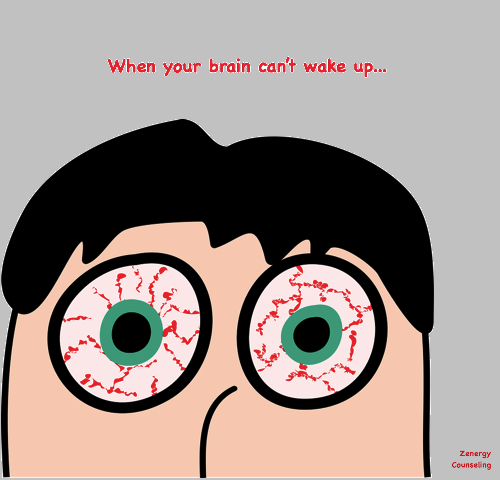Ever have those dreams where you still feel like you are part of it even after you wake up? What about those nightmares or night terrors? You wake up suddenly only to notice that you can’t move or scream for help. The fear of being stuck like that sets in and you don’t know what to do.
That is Sleep Paralysis.
Full Disclosure: I am not a sleep expert. I do enjoy napping but working with individuals whose primary issues have to do with sleep is not something I can help. Thinking back, I don’t recall even going oversleep disorders during school or even for the licensing exam. I started looking into sleep paralysis as a few of my clients have experienced them; one, in particular, is currently struggling with it. In order to understand how to help this client, I started researching, and to my surprise, one of the recommendations does include therapy.
Sleep Paralysis occurs during the Rapid Eye Movement (REM) cycle of the sleep stages. This is the stage when we generally dream, which requires our brains to disconnect from our bodies so we don’t act on our dreams. During sleep paralysis, your body wakes up suddenly but your brain has not- there for that disconnect continues and you feel the lack of control over your body. It can feel terrifying but you are not in any immediate danger. Your brain just needs a little more time to reconnect with your body.
Now, how can mental health professionals actually help with sleep disorders when we really don’t have much training in it? A lot, actually. We may not be able to work on the exact sleep disorder but there are tools that we recommend that can be a huge help for treatment.
- Journal
Write down details of your sleep patterns, any changes, anything you notice. It is easier to identify an issue and possible cause of it when we have data. Journaling helps with gathering the details that you may not remember the long term- especially if you are not sleeping well.
- Improve your hygiene
Sleep hygiene includes setting a regular routine before you go to bed. When you are scared of your experiences, one of the first things you may want to do is to avoid going to sleep at the same time to try and ward it off, but a routine helps tremendously. Try to keep your bedroom quiet, dark, and comfortable- which includes avoiding electronics before going to sleep. This routine can help you unwind before falling asleep.
- Implement relaxation techniques.
I noticed that one of the recommendations was to go to a therapist who uses cognitive behavioral therapy. One of the major components of CBT is to learn healthy coping skills and identify thoughts that trigger negative behaviors. From practice, my client and I identified that the first step we need to take is to focus on relaxation techniques- especially remembering to breathe and incorporate various grounding techniques, progressive muscle relaxations and even stretches.
- Sleep Study
Reach out to professionals who focus on improving the quality of sleep. It could be as simple as learning that you are not breathing in enough air during the night and that is impacting your brain’s ability to transition smoothly from one stage to the next.
One thing I will caution you against is jumping into any conclusions about possible PTSD. Having nightmares is part of the PTSD symptoms but when we look at an individual’s experiences holistically, we can determine if other symptoms exist. The truth is that sleep paralysis does instigate anxiety. The chances are that if you have experienced numerous sleep issues, you are not resting well and are not functioning at your best level. That can trigger other mental illness issues but it is extremely important to take one step at a time. If you would like to know more about why and how sleep keeps you at your best, Need for Sleep may be able to explain more.

